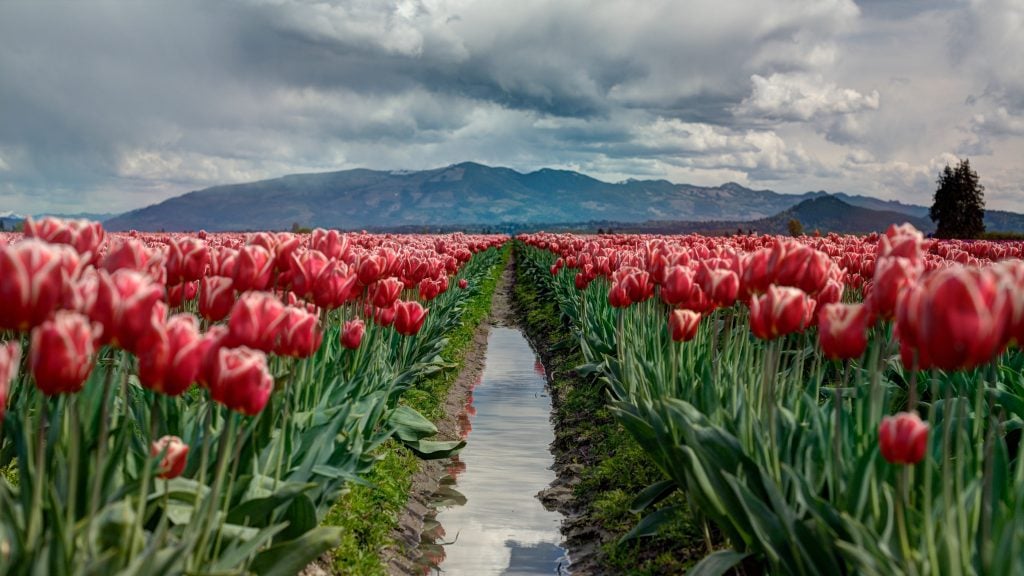Table of Contents
Tulips are known for their unique look and vivid colours; these are a perfect addition to your yard. These are spring bulbs that are planted in late autumn; however, November is the ideal time to plant these beauties.
If you are also enchanted with the beauty of these flowers, then you, too, can grow them in your yard. Tulips propagate via bulbs. However, growing them can be tricky. While daffodils and woodland bulbs may easily thrive under the ground, in the case of tulips, the condition gets trickier. And even if they bloom, the flowers might not be that enticing.
So, many gardeners often question if they can leave tulip bulbs in the ground all year. Well, in this blog, we will be unfolding the details.
Steps to Grow Tulips

We have discussed the different times of the year and the stages of Tulip bulbs. Now it’s time to focus on the steps on how to grow Tulips.
- Begin with selecting the right spot for planting the bulbs. The ideal depth of the hole to plant the bulbs should be 6 to 8 inches deep in the fall. Ideally, the depth of the hole should be three times the size of the bulbs.
- Choose an area that receives direct sunlight. It plays a significant role in flowering.
- The right placement of bulbs is also significant. Make sure that the soil is well-drained. Place the bulbs at a distance of at least 4-6 inches from each other. This tulip gets enough space to grow, and you can enjoy a seamless bloom.
How to Care for Tulips
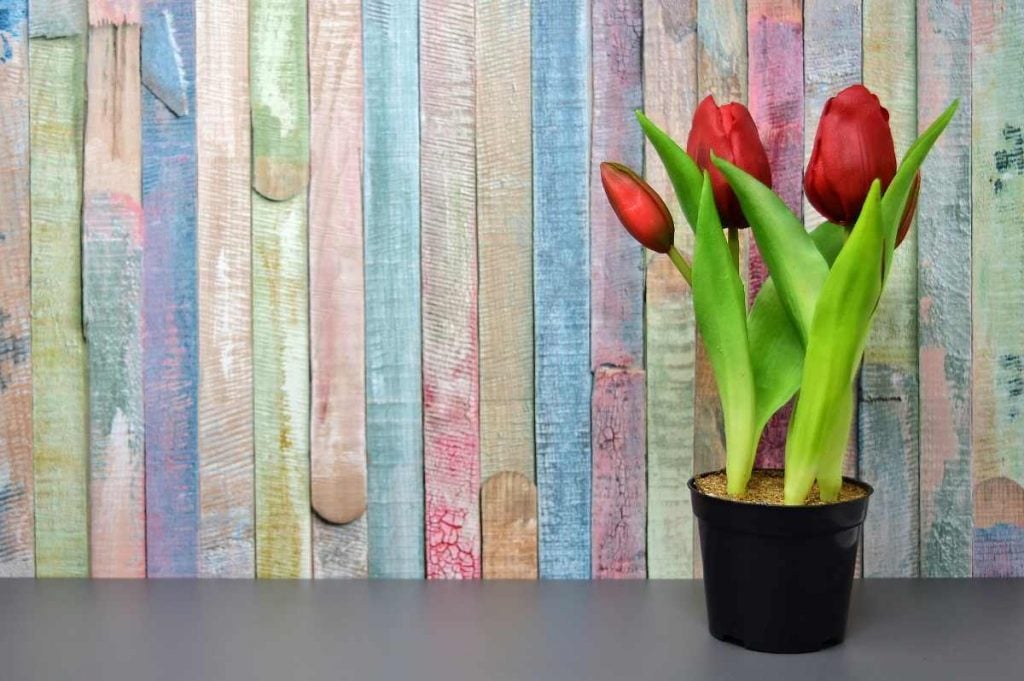
As much as it is important to plant the Tulip bulbs right, it is equally significant to take care of these plants. Here are some of the tips that you can follow:
- Make sure that you plant the Tulips during the fall.
- Ensure that the soil is well-drained. Make sure that you re-water the plant only when you notice that the soil has dried out.
- Tulip prefers neutral to slightly acidic soil for growth.
- Addition of compost and granular fertilizer as it promotes the growth of the plant.
How to Store Tulip Bulbs
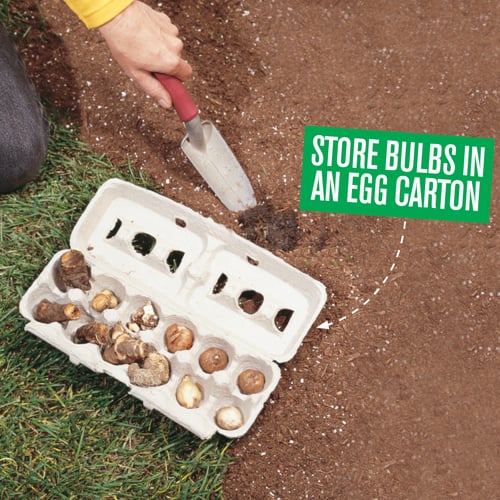
After the blooming period, the cultivator may want to store the Tulip bulbs. However, the right way of storing it is important. This will ensure that the buds are healthy and ready to plant in the following season. Here are the steps to store tulip bulbs properly.
- After the flower has dried out and has turned yellow, you can remove it and start collecting the bulbs.
- While digging out the bulb, make sure that you do not damage it. So, dig a deep hole so that you can easily take it out.
- Once you take out the bulb, remove the excess soil and separate the damaged bulb from the healthy ones.
- Clean the bulb, and allow it to dry until you notice that the outer skin has become dry.
- After this, the bulbs are ready to store. Remove the foliage, if any, but make sure that you don’t damage the basal plate of the bulb,
- Store it in a cool, dry and dark place. You can keep it in a paper bag or cardboard box. And once the season arrives, you can plant these bulbs.
Lifecycle of Tulip Bulb
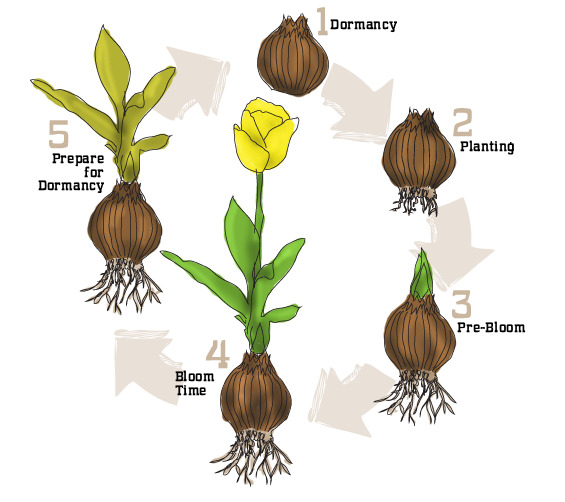
As we have mentioned above, the tulip is propagated via a bulb. And this bulb undergoes different stages at different points of the year. This segment will focus on the same.
Different Stages of Tulip Bulb
- Dormancy– This is the waiting period wherein the bulb rests until the optimal environmental conditions arise for it to grow.
- Sprouting– Once the apt temperature conditions start showing their impact, it triggers the growth of the bulb. It results in the development of roots and shoots.
- Vegetative growth– After sprouting, the shoots start to grow, producing leaves.
- Flowering- As vegetative development is completed, the tulip plant starts to bloom. The bud appears at the tip of the stem.
- Senescence- After the flowering season is over, it begins shedding. The dried flower is removed.
- Bulb maturation– As the plant dies, the bulb contributes to the growth and starts storing the nutrient, which it can use the next year for growth.
Monthly Segregation of Different Stages of Tulip Bulb’s Development
|
Time of The Year |
Stage |
|
September – October |
It is the planting time for tulip bulbs. |
|
November |
As the winter approaches, the rooting begins. It starts drawing nourishment from the ground. |
|
December – January |
Before the bulb starts to bloom, it must rest for a few weeks. This period is called the cooling period. |
|
February – March |
At this stage, the changes in the bulb start taking place, and slowly you will notice the leaves sprouts from the bulb. |
|
April – May |
The Springtime brings out the most beautiful hues of Tulips. |
|
May – June |
Once the blooming period is over, the flowers are cut, and the leaves are left as it is. At this point, the new bulb starts developing, and it draws nourishment from the leaves. |
|
July – September |
It is the propagation period, wherein at least 5 small bulbs can be grown from the mother bulb. |
Factors to Consider When Growing Tulip Bulbs
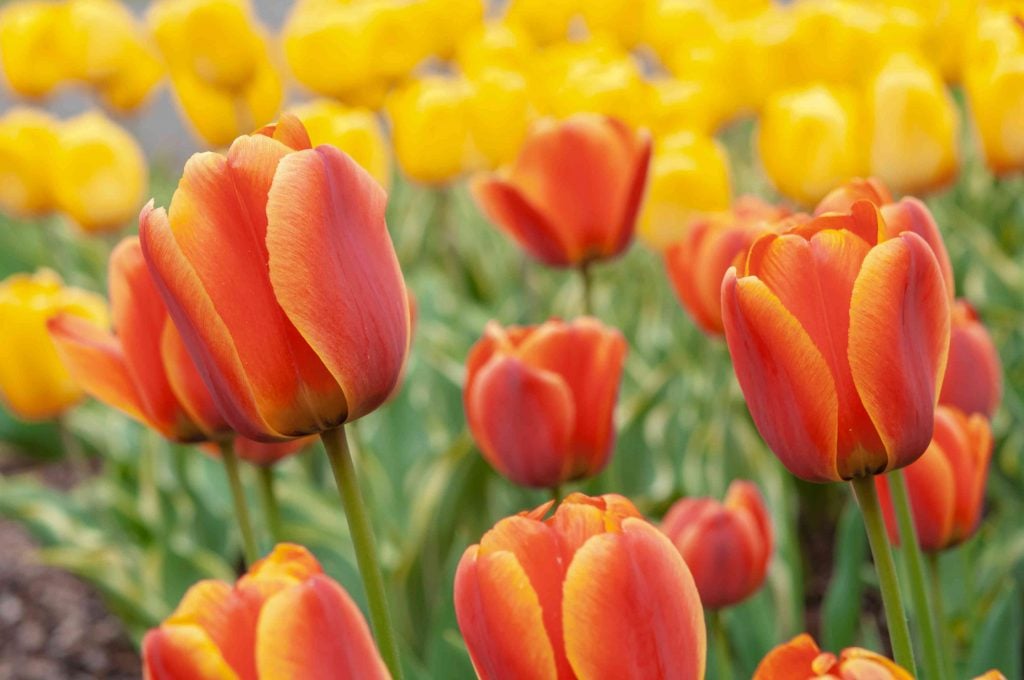
Usually, a Tulip bulb may last for two-to-five years. The usual time for planting the Tulip bulb is during the fall. This gives the bulb enough time to convert the stored nutrient into sugar, which can eventually boost the growth of the plant. Some of the important parameters that impact the growth and flowering of Tulips are as follows.
Temperature
The right temperature is important to ensure that bulbs start to grow. It prefers cool soil for growth. A temperature below 55 degrees Fahrenheit is good enough to initiate the growth of roots in the bulb. It will take around 4-6 weeks for the roots to grow. During the springtime, you will notice the flower stalk starts to appear.
Size of the Tulip Bulb
If you want to grow Tulips via bulb, then the size of the bulb plays an important role. If the Tulip bulb is less than 2.5 inches in circumference, it won’t flower. So, if you want to enjoy a beautiful bloom, you should consider planting a bulb which is at least 4 inches wide. While planting, make sure that the placement of the bulb is at a distance of 4-6 inches and that they are in a straight line.
Planting it Right
To enjoy a picturesque bloom, it is important to plant the Tulips in the right way. You add 9-12 bulbs in a square foot. For planting, dig a hole of a depth of 6 to 8″ and place the bulb. Cover it with soil.
Exposure to Sunlight
A good amount of sunlight promotes the growth of tulips. Hence, you can plant it in an area that receives direct sunlight. However, if you are residing in a warm climate, sunlight can impact the flower. Hence, you can consider planting them in the shade in such regions.
Can You Leave Tulip Bulbs in the Ground All Year
The choice may vary on this. The small varieties of Tulips require a cold dormancy period to show a beautiful bloom during the spring. This is not feasible in regions where temperatures rarely drop below 45 degrees Fahrenheit.
Tulip bulbs need a cold dormancy period of 8-10 weeks; failing to receive this, the bulbs may not bloom. However, in the mild or warm regions, you may dig the bulbs out, store them for three months, and replant them in late winter to enjoy the bloom again.
Wrapping It Up
By now, you are well aware of how to propagate tulips from bulbs and how you can store them. Growing Tulips is an intricate process. From the right time to sow the bulb to ensure a steady supply of nutrients, everything plays an integral role in ensuring a healthy bloom.
In addition to these factors, to get a healthy bloom of tulips, you need to choose the best quality bulb and provide the right condition for growth. Apt sunlight, regular watering, and adding fertilizers are crucial to get a healthy growth of tulips.
Make sure that you plant the tulip bulbs at a distance of at least 6 inches. It will ensure that the plants get adequate space to grow.
In addition, you also need to monitor and care as pests can damage the plants regularly. With proper care and attention, you can enjoy beautiful blooms every year.
Frequently Asked Questions
What Is the Right Time to Plant Tulip Bulbs?
Planting the bulb at the right time is important. Autumn (end of September and start of December) is the right time to start sowing the bulb. After this, it takes around 6 weeks for the plant to start showing signs of growth. Choose a sunny location to plant the tulip bulbs, as it will boost the growth of the plant.
What Are the Good Growth Conditions for Tulips?
Certain things that you should consider while planting tulips are:
- Good exposure to sunlight
- Well-drained soil
- Adding the right amount of fertilizer
- If you reside in warm regions, you prefer planting tulips in the shade.
- Tulips need cool soil to grow.
If I Plant Tulips Late, Will It Impact the Growth?
If you miss the planting period of tulips, then you may not get as impressive a bloom. The right time of planting is important as it gives enough time for the bulb to establish itself in the ground and promote growth. Hence, you must schedule the planting of bulbs during October and November.
What is The Right Depth to Plant Tulip Bulbs?
As much as it is significant to provide the right growth conditions for tulips to grow, it is equally significant to sow it the right way. The ideal depth for planting tulip bulbs should be about 15 cm (6 inches) – 12 cm (8 inches) deep.
However, if you reside in an area of severe frost, you should consider planting the tulip bulbs a bit deeper. The ideal depth should be 12cm (8 inches) deep.
How Long Does It Take for a Tulip to Grow from Bulb?
Usually, it takes around 8 to 16 weeks of winter for it to start showing signs of growth from the bulb. Once it reaches the sprint, the tulip will start showing signs of sprouting, and you will notice leaves emerging. After this, the flower will appear within 15 to 30 days.

